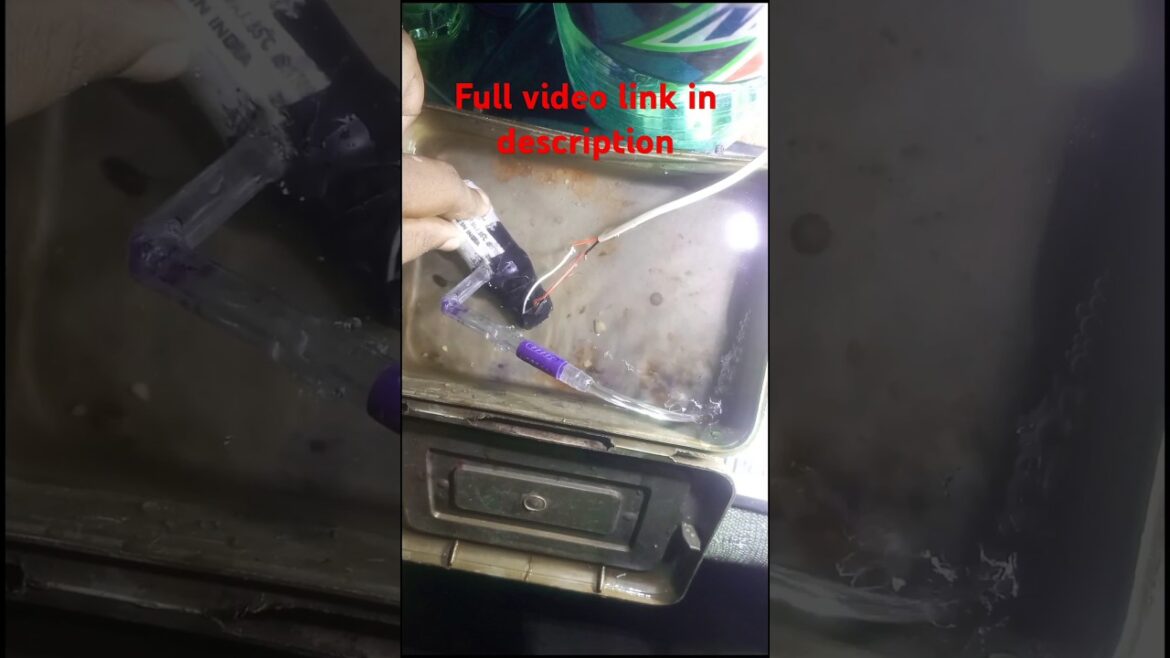👉subscribe😫🙏🙏💓 please 👉👉👉👉👉👉@DCV_short.89 👈👈
👇👇👇
DC moter se mini water💧💦 pump
👉only Rs. 10👈
Full Video link_ https://youtube.com/shorts/gkE3r2ZUmow?si=wLLQGZT0jp9YNdiN
👆👆👆👆
description of a mini water pump requires covering
### Introduction
– **Definition and Purpose**
– A mini water pump is a compact, often portable device designed to move water from one place to another. It is used in a variety of applications, from small-scale aquariums to irrigation systems.
### Design and Components
– **Basic Structure**
– **Housing:** The outer casing, usually made from durable materials such as plastic or metal, protects the internal components.
– **Impeller:** A rotating component that pushes water through the pump.
– **Motor:** Powers the impeller and can be electric or driven by other means like solar energy.
– **Inlet and Outlet Ports:** The entry and exit points for water flow.
– **Seals and Bearings:** Prevent leaks and ensure smooth operation.
– **Types of Mini Water Pumps**
– **Submersible Pumps:** Designed to operate underwater, ideal for applications like small fountains and aquariums.
– **Inline Pumps:** Installed outside the water source, often used in circulation systems.
– **Peristaltic Pumps:** Utilize a rotating roller mechanism to push water through flexible tubing, useful in applications requiring precise fluid control.
### Functionality
– **Operation Principles**
– Describes how the impeller or other mechanism moves water.
– Explains the role of pressure and flow rate in the pump’s efficiency.
– **Power Source**
– Electric, battery-operated, or solar-powered mini pumps.
– Comparison of power sources in terms of efficiency and application suitability.
### Applications
– **Aquariums and Fountains**
– Maintaining water circulation and aeration.
– Creating visual effects and ensuring healthy environments for aquatic life.
– **Gardening and Irrigation**
– Watering small garden beds or potted plants.
– Creating automated irrigation systems.
– **Emergency and Portable Uses**
– Portable pumps for emergency water removal in flooded areas.
– Use in camping or outdoor activities to transfer water from various sources.
– **Medical and Laboratory Uses**
– Precision pumps for handling fluids in medical equipment.
– Use in laboratories for various fluid transfer tasks.
### Advantages
– **Compact Size**
– Allows for easy installation and use in small spaces.
– **Efficiency**
– Capable of delivering adequate water flow while consuming minimal power.
– **Portability**
– Easy to move and deploy in different locations as needed.
– **Cost-Effectiveness**
– Generally affordable compared to larger pumps.
### Drawbacks
– **Limited Capacity**
– May not be suitable for high-volume applications.
– **Durability**
– Smaller components might wear out faster under heavy use.
– **Maintenance**
– Requires regular cleaning and inspection to prevent clogging and ensure longevity.
### Technical Specifications
– **Flow Rate**
– Measured in liters per minute or gallons per minute, indicating how much water the pump can move.
– **Pressure Rating**
– The maximum pressure the pump can handle, important for applications needing higher force.
– **Power Consumption**
– Details the energy required to operate the pump, affecting operational costs and energy efficiency.
– **Dimensions and Weight**
– Impact on installation and portability.
### Installation and Maintenance
– **Installation Guidelines**
– Steps for setting up the pump, including positioning, connecting to water sources, and ensuring proper alignment.
– **Routine Maintenance**
– Cleaning, checking for leaks, and replacing worn parts.
– **Troubleshooting**
– Common issues like reduced flow rate or mechanical failure and how to address them.
### Innovations and Future Trends
– **Advancements in Technology**
– Integration of smart controls and sensors.
– Improvements in energy efficiency and material durability.
– **Environmental Considerations**
– Development of eco-friendly and energy-saving models.
### Conclusion
– **Summary of Key Points**
– Recap of the mini water pump’s design, functionality, applications, and considerations.
– **Future Outlook**
– Potential developments and evolving uses in various fields.
This outline provides a framework for a detailed and informative description of mini water pumps. Each section can be expanded with technical details, case studies, and practical examples to reach a full 5000-word
description.
Thank for visiting my YouTube▶️ channel 👉@DCV_short.89 👈
please, Like, shere and Comment 💬
Thank you❤ alll
🙏🙏🙏🙏❤❤


1 Comment
Nicely❤❤🎉